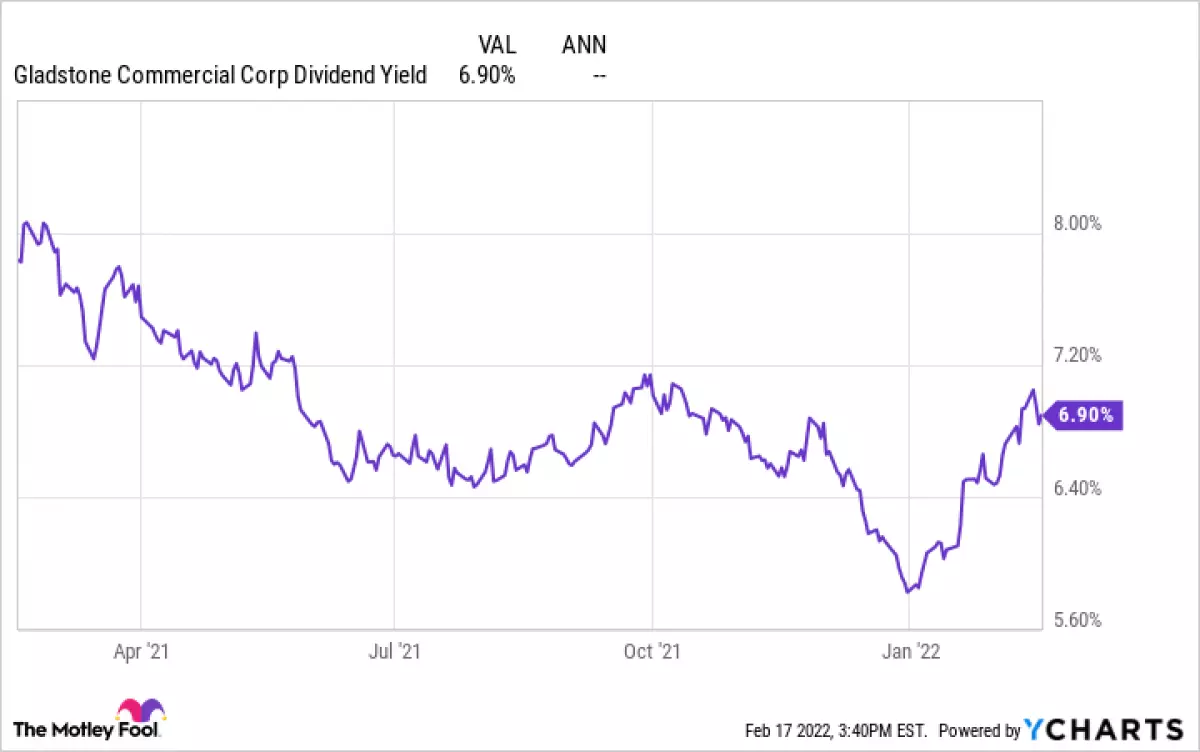Real estate investment trusts (REITs) are known for their reliable and often higher-than-average dividend returns. However, not all REIT dividends are considered safe. Gladstone Commercial (GOOD -1.12%) is one of the higher-yielding equity REITs, with a dividend yield of 6.90%. While this return may be appealing to investors, it's important to assess the safety of these dividends. Let's take a closer look at the recent history of Gladstone Commercial's dividend yield.
Gladstone's Business
Gladstone Commercial is a diversified REIT that specializes in the ownership and management of single-tenant and multitenant net lease properties. With 129 properties across 27 states, the company generates the majority of its rents from industrial and office properties. Unlike many other REITs that focus on top-tier markets, Gladstone primarily operates in secondary growth markets across the Northeast, Midwest, Southeast, and select markets of the Southwest.
Over the past five years, Gladstone Commercial has seen a 6.37% increase in revenue. While this growth may not be stellar, it is a positive trend. Despite the challenges posed by COVID-19, the occupancy rate for its portfolio remains strong at just over 97%. Additionally, same-store rents have shown a 2% year-over-year increase. Although this growth may not be as impressive as that of other REITs, such as industrial-focused ones with double-digit growth, it is still a positive sign.
The Risks of Gladstone's Dividend
In 2021, Gladstone Commercial experienced a 6.4% increase in core funds from operations (FFO), a metric commonly used to assess a REIT's profitability. Revenue also improved; however, an increase in expenses offset this growth. The redemption of Class D shares, totaling $88.3 million, resulted in a net loss of $4.55 million for the full year. It's worth noting that the redemption of shares is not an ongoing expense, so there is hope for positive net operating income in 2022, as seen in 2020.
However, Gladstone Commercial's high dividend payout ratio of 94% and its debt obligations raise concerns. In 2022, it faces approximately $95.17 million in mortgage maturities, while only having $8 million in cash and cash equivalents on hand. To meet these obligations, the company may need to restructure its debt, issue more shares to raise capital (thus diluting the value of existing shareholders), or sell assets. Issuing more shares has been a common practice for Gladstone, which has limited the growth of its per-share FFO despite increased revenue over the years.
While Gladstone Commercial's high dividend may attract many investors, it is important to consider the risks associated with such dividends. High dividends often indicate more risk, making them among the least safe dividends to invest in. If safety is the main priority, there are other diversified REITs, such as W.P. Carey, that offer similar portfolio exposure as Gladstone Commercial with potentially safer returns.
 Gladstone Commercial Corporation Dividend Yield data by YCharts.
Gladstone Commercial Corporation Dividend Yield data by YCharts.

















